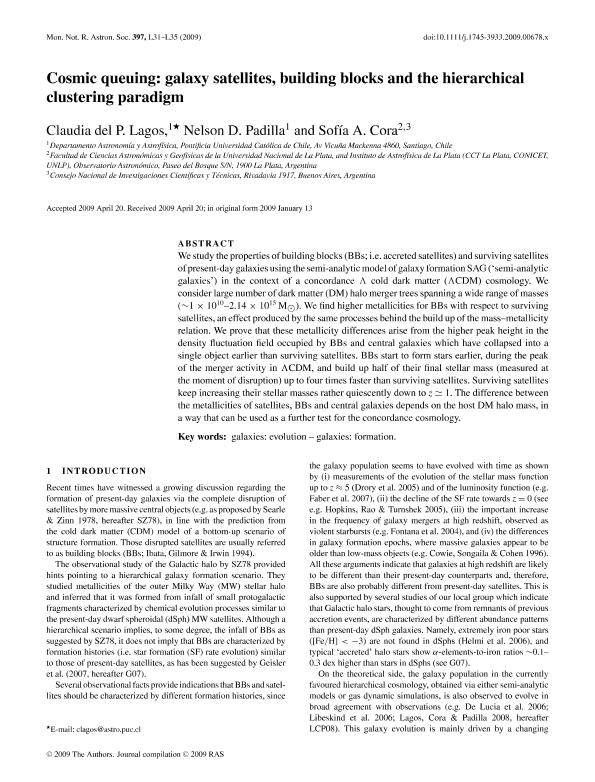Artículo
Cosmic queuing: galaxy satellites, building blocks and the hierarchical clustering paradigm
Fecha de publicación:
12/2009
Editorial:
Wiley Blackwell Publishing, Inc
Revista:
Monthly Notices of the Royal Astronomical Society
ISSN:
0035-8711
Idioma:
Inglés
Tipo de recurso:
Artículo publicado
Clasificación temática:
Resumen
We study the properties of building blocks (BBs; i.e. accreted satellites) and surviving satellites of present-day galaxies using the semi-analytic model of galaxy formation SAG (‘semi-analytic galaxies’) in the context of a concordance cold dark matter (CDM) cosmology. We consider large number of dark matter (DM) halo merger trees spanning a wide range of masses (∼1 × 1010–2.14 × 1015 M). We find higher metallicities for BBs with respect to surviving satellites, an effect produced by the same processes behind the build up of the mass–metallicity relation. We prove that these metallicity differences arise from the higher peak height in the density fluctuation field occupied by BBs and central galaxies which have collapsed into a single object earlier than surviving satellites. BBs start to form stars earlier, during the peak of the merger activity in CDM, and build up half of their final stellar mass (measured at the moment of disruption) up to four times faster than surviving satellites. Surviving satellites keep increasing their stellar masses rather quiescently down to z 1. The difference between the metallicities of satellites, BBs and central galaxies depends on the host DM halo mass, in a way that can be used as a further test for the concordance cosmology
Palabras clave:
Formation of Galaxies
,
Galaxies
,
Evolution of Galaxies
Archivos asociados
Licencia
Identificadores
Colecciones
Articulos(IALP)
Articulos de INST.DE ASTROFISICA LA PLATA
Articulos de INST.DE ASTROFISICA LA PLATA
Citación
Lagos Urbina, Claudia del Pilar; Padilla, Nelson David; Cora, Sofia Alejandra; Cosmic queuing: galaxy satellites, building blocks and the hierarchical clustering paradigm; Wiley Blackwell Publishing, Inc; Monthly Notices of the Royal Astronomical Society; 397; 12-2009; 31-35
Compartir
Altmétricas




